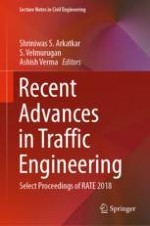2020 | OriginalPaper | Chapter
Simulation of Pedestrian Movement Over Different Facilities in Gangtok Using VISWALK Software
Authors : Vishal Kumar, Arunabha Banerjee, Akhilesh Kumar Maurya
Published in: Recent Advances in Traffic Engineering
Publisher: Springer Singapore
Activate our intelligent search to find suitable subject content or patents.
Select sections of text to find matching patents with Artificial Intelligence. powered by
Select sections of text to find additional relevant content using AI-assisted search. powered by
